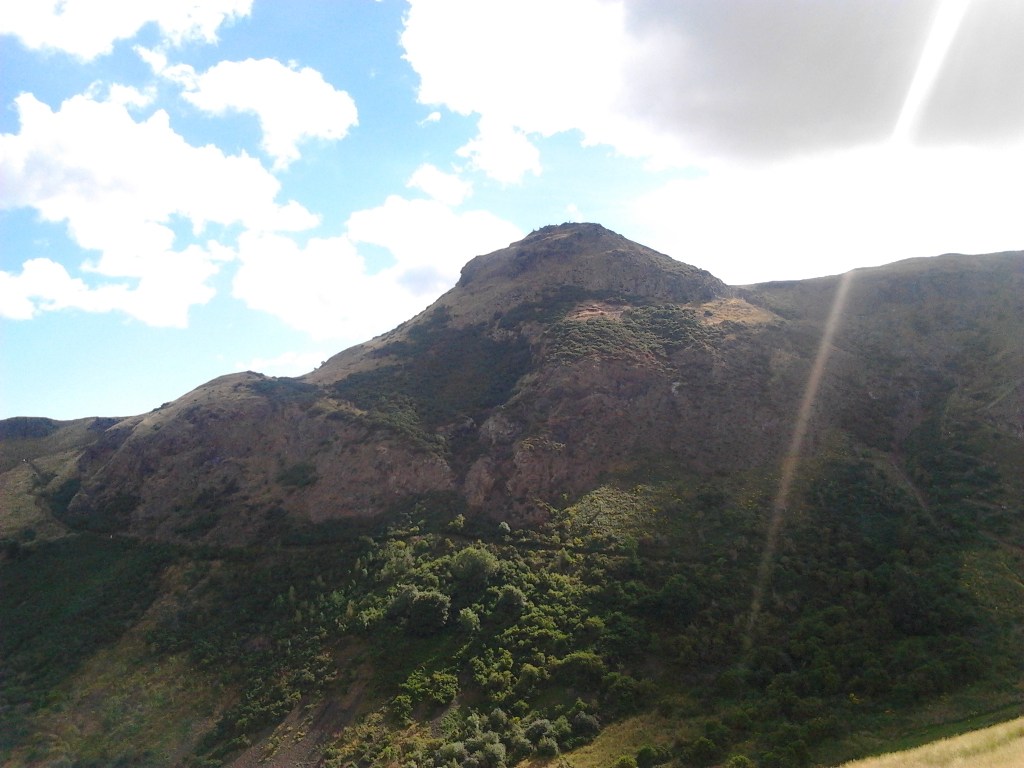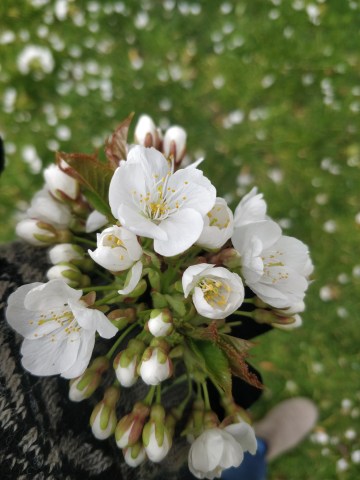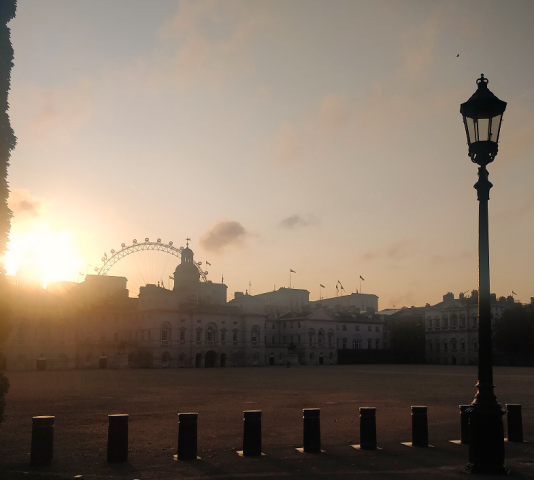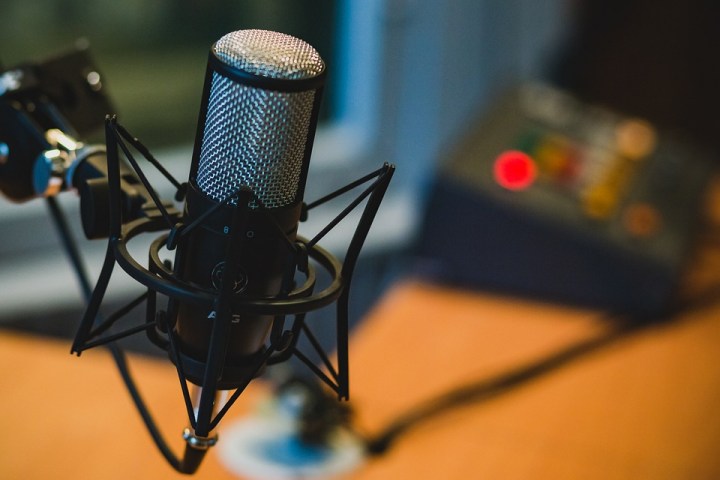Teching at the Edinburgh Festival

This year I am not at the Edinburgh Festival, bucking a rule that has held for many years of my life. I have worked on a bundle of shows up there over several years, and figured as the Festival is currently in full swing I may as well sit back, chill out, and reminisce on what it’s like to be a techie in Edinburgh in August….
Firstly, there’s two kinda techies working the Edinburgh Festival. There’s people like me, who arrive, work, and leave within a couple of days. We are very lucky. Then there’s the vast majority of technicians, who can find themselves working over 18 hours a day during the rehearsals/preview weeks, and can often be very poorly paid. They may be called upon to programme back-to-back shows, or to op a show they’ve never seen before. They are managing dozens and dozens of companies arriving bewildered and stressed, changing over sets, problem-solving the inevitable failures that arise when you’ve got a) temporary venues with low-power infrastructure jammed into a tricky space and b) when said infrastructure is under near-constant load from the sheer volume of stuff passing through. With build-up to the festival starting months in advance, these are the people who keep things ticking over in what is one of the most insanely densely packed, non-stop festivals on earth. I have known techies who’ve had perhaps one day off in 30, and every single day was packed full from silly a.m. to silly p.m..
I have also known many people who were very badly paid – and in some cases not paid at all – for the amount of work they did, or who were made to live in incredibly crampt and uncomfortable conditions, because you do the work ‘for the love’ or ‘for the experience’. And yeah. It’s an amazing experience and we all love what we do; but the conversations about just how badly paid and badly treated many people behind the scenes – and indeed on the stage – are long, needful and ongoing.
A side-effect of this is that you also get many technicians at Edinburgh who are just starting out. Many is the time I’ve walked into a venue only to discover that my programmer not only can’t answer my questions, but doesn’t really know how to use the lighting desk. Don’t get me wrong – there are some absolutely superb technicians for whom there’s not enough gratitude or thanks in the world, and they have saved my bacon. But the nature of the festival also means that of necessity, there’s recruitment from immediate graduates, or simply from young people who are incredibly keen, without necessarily being highly trained. As a designer, I’ve been one of those, and remember the terror of the experience. As a means of giving people a learning opportunity, Edinburgh is fantastic, albeit underpaid. As a way to produce the highest quality work possible, it’s a more precarious balancing act.
As a visiting designer, your experience varies hugely depending on which venue you’re in and what company you’re travelling with. Money is always incredibly tight – it’s very rare for anyone to break even. As a result your fee, travel and accomodation are likely to be the first thing people try to cut. I have been invited to travel to Scotland in the back of a van full of set, asked to pay for my own ticket, not paid a fee at all, and finally been told that my bed is a small sofa in the kitchen which I need to have vacated by 7.30 a.m. every morning because that’s the latest the choreographer needs to be preparing his vegan snacks. Ironically in that case there was a spare bed in the flat, but it had been promised to some friends of the director who wanted to see Edinburgh, and the lighting designer’s comfort was considered secondary. In that particular case I put my foot down and wound up, as probably everyone who’s a regular at the Festival has done at some point, in student halls. Blessed, thankful, heaven-sent student halls.
On the actual day of your technical rehearsal, you are allocated at most five hours in the venue. That’s five hours to get in, build any set, design any lights, set up the sound and run a full technical rehearsal and dress rehearsal too. The average running time of an Edinburgh show is approximately 45 minutes, so this challenge shouldn’t be impossible. However, I have achieved it precisely once, and it was a miracle.
To save money, if the company you’re working with can send you to Edinburgh on the same day as the rehearsal (and thus not pay an extra night accomodation) they will. In the worst case, this means taking a delayed train from Kings Cross to Waverley, jam-packed with tourists, performers, writers, directors and, in one memorable case, a carriage of clowns and a group of Chinese students, one of whom passed out on my shoulder just outside York. If that train is delayed – and this has happened too – you sprint up the hill from Waverley to your venue, cursing every lost minute of tech time that’s now slipping through your fingers, and try and do everything above, in half the time.
As a lighting designer, I will pre-programme the show as much as I am humanly capable of doing. This means spending at least a day on my laptop or computer using the offline editor of whatever lighting desk I’m actually going to use on the day, looking at the paper lighting plan and sorta guessing based on luck and a bit of maths what a lighting state might look like. If it works well, you save a tonne of time, as instead of having to design a whole show from scratch in the venue you can simply move from one state to the next, cues already written down in the stage manager’s book, and fix everything as you go. Fixing is way easier than designing from empty.
That said, the rigs in Edinburgh have often been… challenging… to work with. In the days before LED technology really became the saviour of everything, most Edinburgh rigs were designed for comedy. This meant, to its creators, some front light, some lilac side-light, and deep, saturated blue and deep, saturated red backlight. Trying to create a naturalistic look from these ingredients is nigh-on impossible. If you had money (no one does) you could hire in some lighting kit to supplement the rig, at an incredibly steep mark-up. If you were very, very lucky, someone else might want to share your hires, and split the cost – but that almost never happened. Thankfully in recent years, the cheapness of LED lights has begun to offer a bit more flexibility, even if the optics are still kinda garish in a lot of venues.
If by a miracle you arrive and are set up and ready to go in say, half an hour to forty minutes, your attention then turns to the stage. If you’re lucky, the set will be simple and easy to build, and the actors will have had a chance to get into costume, find their place and will also generally be good to go. If you’re unlucky, you find that the sound file the sound designer bought isn’t working properly with the system, the set doesn’t fit, the cast rehearsed in a space that was either far too big or far too small for the actual space they’re due to perform in, the director is anxious, the producer is pacing and it’s all gone a bit to pot. The lack of time in Edinburgh means one department’s disaster becomes everyone’s disaster. Whereas in a two or three day rehearsal period you don’t mind having to wait on one department to finish a thing before moving on, in Edinburgh you simply can’t wait. Neither do you have time to make a note of something to fix later – there is no later. Once your five hour rehearsal period is up, the next time you’re likely to be in that performance space is in front of a paying public. It’s a rock and a hard place. If you don’t stop and get it right during tech, you’ll never really fix it. But if you do stop, you may never get to the end of your tech and you’ll wind up going into an actual show with, say, the last fifteen minutes of your play neither rehearsed nor plotted.
A great many shows in Edinburgh have this as their vice – and you can see it. A lighting design that was moving fluidly from one state to the other suddenly settles down into bright white front light for the last five scenes, and stays there. A sound design rich with nuance suddenly just becomes loud, or silent, or stops altogether. Actors who moved with great confidence through the space, suddenly find themselves bunched and huddling in a corner, or miles away from their needed prop, because they simply didn’t have time to rehearse how the hell they were gonna get to where they needed to be.
But so it goes. Your time slot finishes, and despite the near-tears of the director, you are booted from the venue so the next show can take its punt. If you’re lucky, there’s still time to dump your bags in the student hall/borrowed flat/kitchen that will be your accomodation for the next few days/weeks/month and get supper. If not, you just sorta dribble into a hole and hope the anxiety dreams don’t keep you up at night.
Then a hiatus. It’s unlikely that your rehearsal is followed immediately by a show. Instead there are a few days to kill. In the case of the most supremely stressed shows, they spend this time agonising over things beyond their control. One of the most egregious examples of this I’ve ever seen was a company who decided to run their entire show in the front hall of their accomodation, while the stage manager was forced to mime pressing ‘lights’ or ‘sound’ written on little strips of paper as the show progressed – one of the more absurd exercises I’ve ever seen inflicted on a woman who was frankly, a fantastically good DSM.
During this time, lines are run, tension mounts and of course – flyering begins. The city fills up with eager, haunted faces as people line the streets asking if you, yes you, want to come and see their amazing production about blue yoghurt. Some groups go out en masse in full costume and practically perform their show right there on the Royal Mile, hollering and cavorting to attract attention. Others just stand with leaflets out and hopeful smiles. In some cases, flyering itself can become a source of great internal cast tension. No one wants to do it, but if he’s definitely doing it twice a day, whereas she is sort of skipping her shift and not really bothering… the ire begins to build. Technicians are kinda expected to do it too, especially if they’re in for the entire run. I have always tried to avoid it to the best of my ability, and am lucky in that I’m usually straight back to London at the end of previews, and thus miss the peak of crowds in Edinburgh, and thus the peak of flyering-mania. My aura of shunning has become so powerful that I can walk through the city now and no one will even dare offer me a leaflet; a good superpower for August.
Perhaps in this time you watch a few shows, and take huge comfort from the fact that other people are clearly struggling to get their lights right too. Perhaps you hang out with your team, but to be honest, generally as the lighting designer I’m not really integrated into things. I will not be staying the whole run, and as a face behind the desk people neither really know much about what I do, nor who I am. In one job I’ve worked recently, I found I was referred to as ‘the ghost’. If you don’t drink vast quantities of alcohol, much of the culture of the festival will be lost on you. Sure, you can (and I do) re-edit cues on your offline editor again, tweaking timings and doing notes blind and hoping you get it right. But otherwise… there’s very little to do except wait.
I usually go for walks, up Arthur’s Seat and through the city. I love the central library, and have good friends who I always try to see. There’s a hot chocolate place out towards Morningside where I’ve spent many a happy hour hiding from the noise of the centre of town. I get some scribbling done, and chat through cues with the stage manager so we are both as prepped as we can be for the show.
And then the show opens, and it’s usually fine. Sometimes it’s good – sometimes you are incredibly proud that with a rig you didn’t design, working to ridiculously tight limits, you’ve done something that genuinely looks ok. Sometimes it’s simply the best you can do with the situation, and it’s hard to be proud artistically of that, even if professionally you know you’ve done what you can.
Again, to save money, the producer usually has you on a train straight back to London the moment the opening show is finished. Twenty five minutes after the last blackout, you’re off to Waverley without really saying goodbye. On the train you recognise others leaving Edinburgh – producers and technicians with bags under their eyes, looking a little shell-shocked from the strange cycle of waiting-stressing.
It is an extraordinary thing, the Edinburgh Festival. It is one of the most remarkable cultural events I have ever seen, and brings about an astonishing transformation to a whole city. Sometimes the technical aspects are stunningly good; most of the time they are simply decent for what they can be. Sometimes they’re pretty pants. But when that’s the case, it’s never for a lack of trying.





